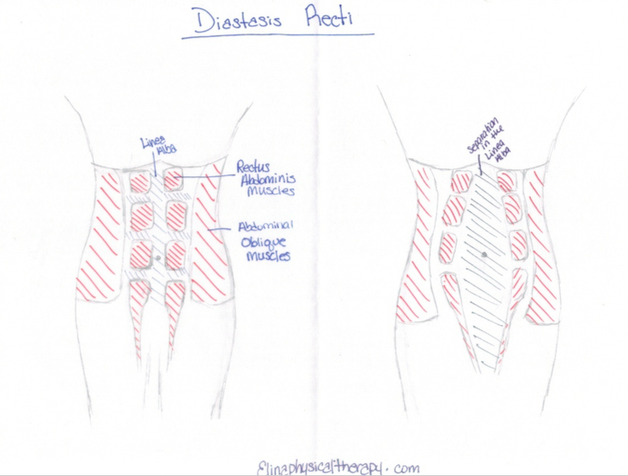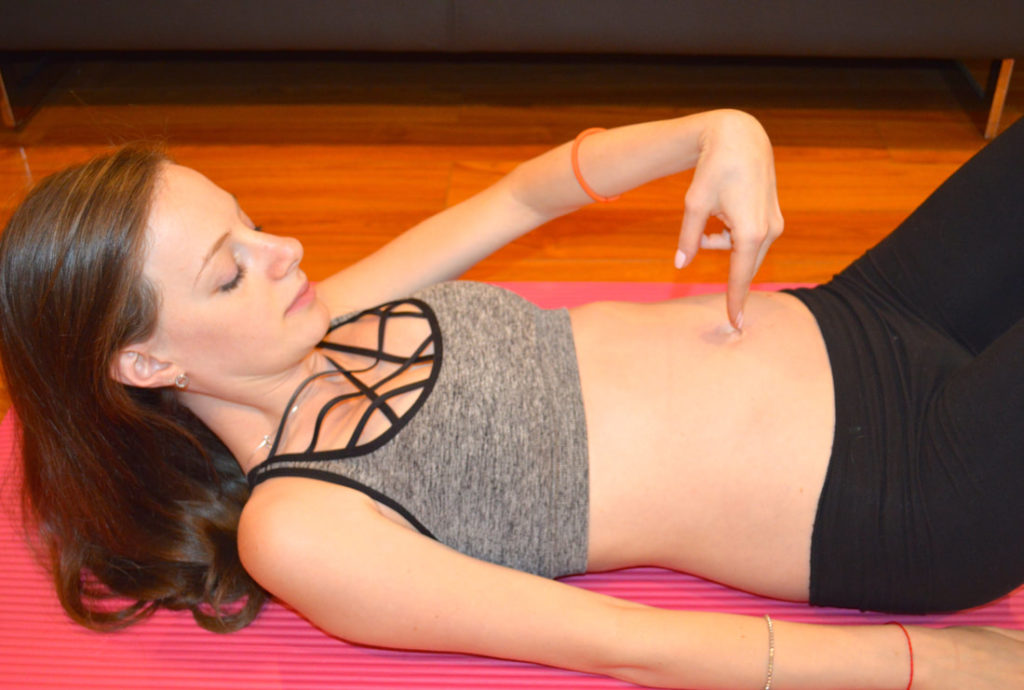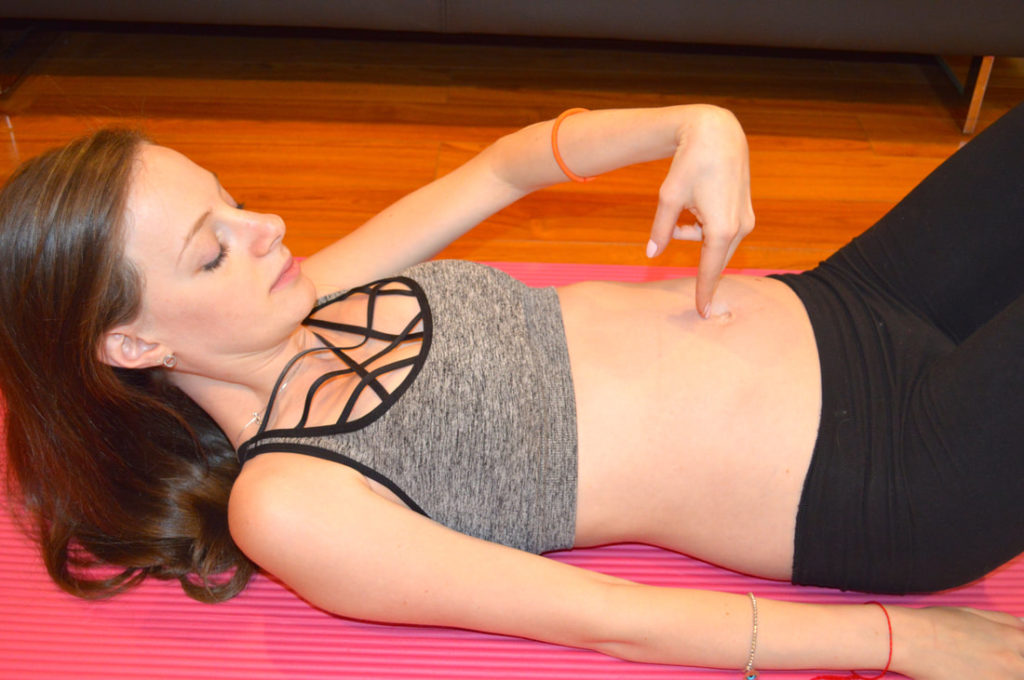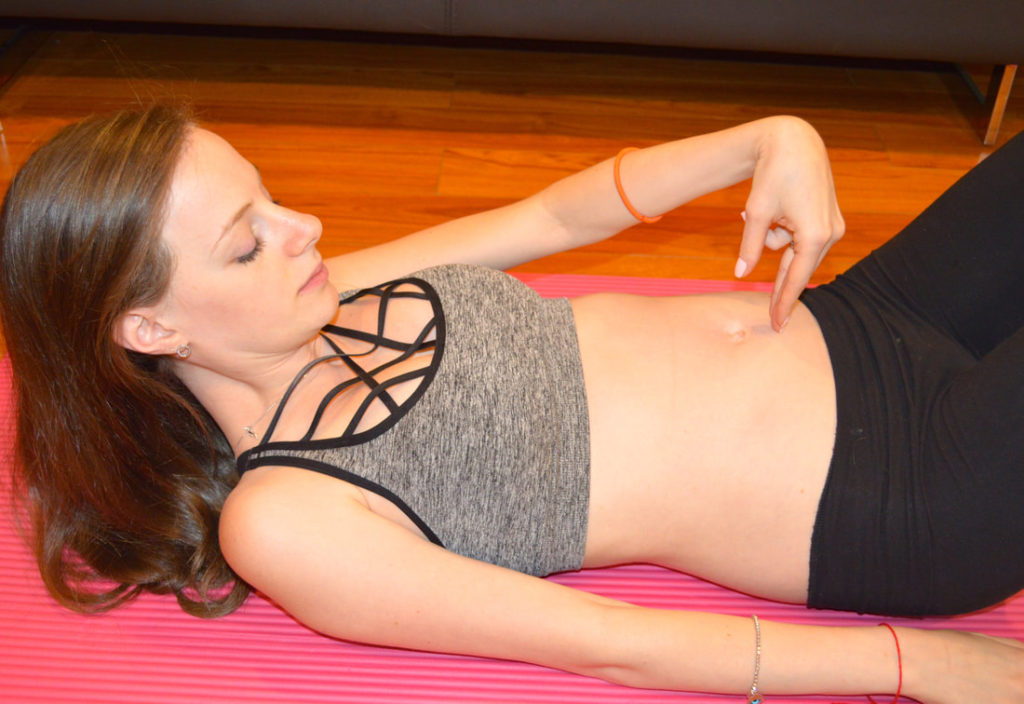What is Diastasis Recti:
Your abdominal muscles consist of a left and right side group of muscles called the Rectus Abdominis, and they are connected by a collagen structure of connective tissues going down the front of your stomach called the Linea Alba. A Diastasis Recti is a widening of the gap between the 2 sides of the Rectus Abdominis at the Linea Alba. Since the abdominal muscles play a large role in core stabilization, this separation can lead to core instability and a decrease in function.

What causes a Diastasis Recti:
During pregnancy, most women develop some level of Diastasis Recti simply because of how much the abdomen has to stretch, and because there is an increase in intra-abdominal pressure that is not being controlled properly. Many women continue to have this separation shortly after giving birth, but generally the muscles should go back after a few months. If the separation is wide enough and it is not treated, it may get worse, especially with subsequent pregnancies.
This can cause:
Functional issues– Constipation, urine leaking, back pain, difficulty breathing, and decreased stability. In severe cases, the tissue may tear and you may get a Hernia (abdominal organs stick out of the tear).
Aesthetic issues– Your stomach might stick out so that you have a small pooch, or you may keep looking pregnant long after having given birth because the muscles aren’t able to properly contract and pull in your abdomen.
How to Test for Diastasis Recti:
- Lay down on your back on a flat surface with your knees bent and feet flat on the floor
- While relaxed, with your palm facing you, place your fingers just above the belly button
- Lift your head and neck off the floor, slightly so that your shoulder blades are still touching the floor, and press your fingers down into your abdomen
- The gap that you feel is the diastasis recti, see how many fingers it takes to fill that gap.
- If it is 3 or more fingers wide, then you should see a specialist.
- Repeat this test 2 more times; once just above the bellybutton, and once a few inches below the belly button
- You should feel your muscles squeeze around your fingers if you try to contract the abdominals; if you do not feel the muscles tense up, then you need to work on reconnecting the abdominals and strengthening your core.
Things to Avoid:
- Straining the abdominals (pushing if you are constipated)
- Lifting heavy things without bracing your abdominals
- Improper exercise; If you have a Diastasis Recti you need to be careful with your exercises.
- Crunches, sit-ups, push ups, planks, some yoga positions (downward dog), backbends, spinal extensions, twisting the spine.
- Basically any exercise that makes you strain your abdominals and makes your stomach bulge out can cause the separation to get bigger if you are not doing the exercise properly and are not being careful.
Safe Exercises:
- Any exercise that makes you pull your stomach in (abdominal compressions)
- Pelvic tilt, bridge with belly scooping, heel slides
- Working on your obliques to help bring the abdominal muscles together
- Always be sure to exhale when you are performing a straining activity so that you are not creating compression within the abdomen


